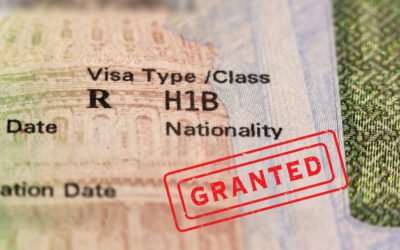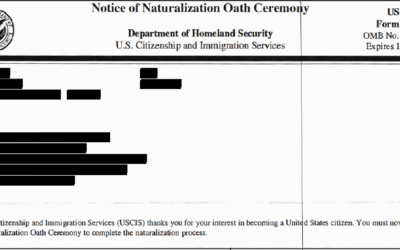To be eligible for naturalization, permanent residents must establish, among other things, that they have maintained continuous residence and physical presence in the United States for a specific period of time.
The time requirements for continuous residence and physical presence vary depending on whether a permanent resident is filing for naturalization under the general naturalization provision (section 316(a) of the Immigration and Nationality Act (“INA”)) or as the spouse of a U.S. citizen under section 319(a) of the INA.
An applicant filing under the general naturalization provision (not the spouse of a U.S. citizen) must be a continuous permanent resident for five (5) years prior to applying for naturalization, and must have been physically present in the United States for at least thirty (30) months of the five (5) years.
An applicant filing as the spouse of a U.S. citizen must be a continuous permanent resident for three (3) years prior to applying for naturalization, and must have been physically present in the United States for at least eighteen (18) months of the three (3) years.
How to Demonstrate Continuous Residence
To demonstrate continuous residence, an applicant must provide sufficient documentation to establish that they maintained residence in the United States, without extended absence(s) of six (6) months or more, for the requisite period of time. Evidence may include: a comprehensive arrival and departure record, certified copies of tax return filings with the IRS, evidence of any property owned in the United States since becoming a permanent resident, divorce and marriage certificates, copies of rental agreements and/or deeds for foreign property, and any other evidence of bank accounts, utilities, insurance, or other documents showing residence in the United States.
An absence of six (6) months to one (1) year raises a rebuttable presumption that continuity of residence has been interrupted. An applicant whose continuous residence has been broken, may reapply for citizenship four (4) years and one (1) day following the date of their return to the U.S. to resume residency. An applicant filing as the spouse of a U.S. citizen, whose continuous residence has been broken, may reapply for citizenship two (2) years and one (1) day following return.
How to Demonstrate Physical Presence
To demonstrate physical presence, an applicant must establish that he or she was in the United States for the requisite period of time. Applicants should submit a comprehensive arrival and departure record which itemizes the total number of days that the applicant spent outside of the country, including weekend trips to Canada and Mexico.
In essence, “continuous residence” concerns the time an applicant resided lawfully in the United States without any single absence long enough to “break” continuity for naturalization purposes and “physical presence” concerns the total number of days that an applicant was actually in the United States during the requisite period.
If you have questions or concerns on whether you are eligible to file for citizenship, contact Dayna Lally at (617) 870-1000 or by email to [email protected].





